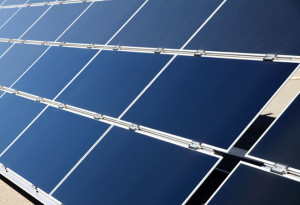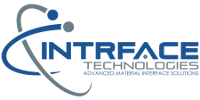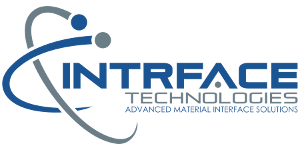Intrface Technologies offers multiple technologies for the Atmospheric Plasma Treatment of Solar Panels, Coatings, Films, Cells and Mounting Systems. Working with leading thin film and silicon manufactures, we offer glass cleaning solutions as well as surface activation and modification atmospheric plasma solutions spanning from film stack technology, antireflective coatings applications to junction box bonding and potting as well as panel mounting adhesion systems.

Proper antireflective coating adhesion on solar panels requires a clean and active (wetted) or high surface energy state of the material substrate prior to coating. Intrface Technologies atmospheric pressure plasma treatment systems have been used by world class solar panel manufacturers to ensure a durable antireflective coating finish to stand up to rigorous industry standards and harsh environmental conditions. We offer environmentally friendly non-contact wet chemistry free glass cleaning solutions with beam widths to treat the entire panels in-line and keep up with high speed production demands. In keeping with the environmental friendly theme of renewable energy, Intrface Technologies atmospheric plasma systems offers the widest atmospheric plasma treatment area (beam width) while also consuming the lowest power and process gasses in the industry. That’s good for keeping costs down as well as the environment.
Solar panel manufacturers put a lot of effort into making their solar panel systems robust. They need to be able to withstand severe thermal cycles and heavy weather. The majority of manufacturers offer the 25-year standard solar panel warranty with the focus being on performance of their solar panels staying above a specific range over the life of the panel. However, the performance of the panel means nothing if the electrical connection to the power feed fails (the Junction or J Box). Atmospheric plasma cleaning, activation and modification of HDPE and other junction box material surfaces ensures a reliable electrical potting or bond of the junction box to the panel for the life of the unit. The same goes for the mounting system. The performance of the panel means nothing if the panel mounting system fails due to wind or physical impact. Atmospheric plasma treatment of solar panel mounting systems ensures the best bond performance and offers a clean, safe and non-contact surface preparation method when compared to dirty and inconsistent abrasive or toxic wet chemistry cleaning methods.
Intrface Technologies is in a unique position to be able to offer several different types of atmospheric plasma technologies targeted to our expertise in solving cleaning, bonding, coating and surface modification challenges.
Related articles:
- Sailer, R. A., Wagner, A., Schmit, C., Klaverkamp, N., and Schulz, D. L., “Deposition of transparent conductive indium oxide by atmospheric-pressure plasma jet,” Surf. Coat. Technol. 203, 835 (2008). Abstract: Indium (III) beta-diketonate complexes were employed as the solid precursor sources in the atmospheric-pressure plasma chemical vapor deposition of indium oxide films using He carrier gas, O2 reactant gas and growth temperatures from 25 to 250 °C. Ellipsometry and X-ray reflectivity showed that the films varied in thicknesses from 40 to 70 nm over the 30 cm2 deposition growth area for a 12 min duty cycle. The as-deposited films exhibit transmittance in excess of 90% over the visible spectrum while maintaining resistivity on the order of 10− 2 Ω cm. Improved electrical properties (i.e., ρ < 10− 3 Ω cm) were observed after thermal treatment (T ~ 200 °C) in a controlled gas ambient tube furnace.
- Kim, S. H., Kim, J. H., Kang, B. K., and Uhm, H. S., ” Superhydrophobic CFx coating via in-line atmospheric RF plasma of He-CF4-H2,” Langmuir 21, 12213 (2005). Abstract:Stable superhydrophobic coatings on various substrates are attained with an in-line atmospheric rf plasma process using CF4, H2, and He. The coating layer is composed of CFx nanoparticulates and has an average roughness of approximately 10 nm. This roughness is much smaller than other surfaces reported for superhydrophobicity in the literature. The superhydrophobic coatings are produced on both metallic and insulating substrates without any need of separate microroughening or vacuum lines.
Contact us to find out more about the Atmospheric Plasma Treatment of Solar Panels or to receive a complimentary copy of the technical articles above utilizing atmospheric plasma. Please reference the authors and publication number in your email request (copy and paste into your email response).

